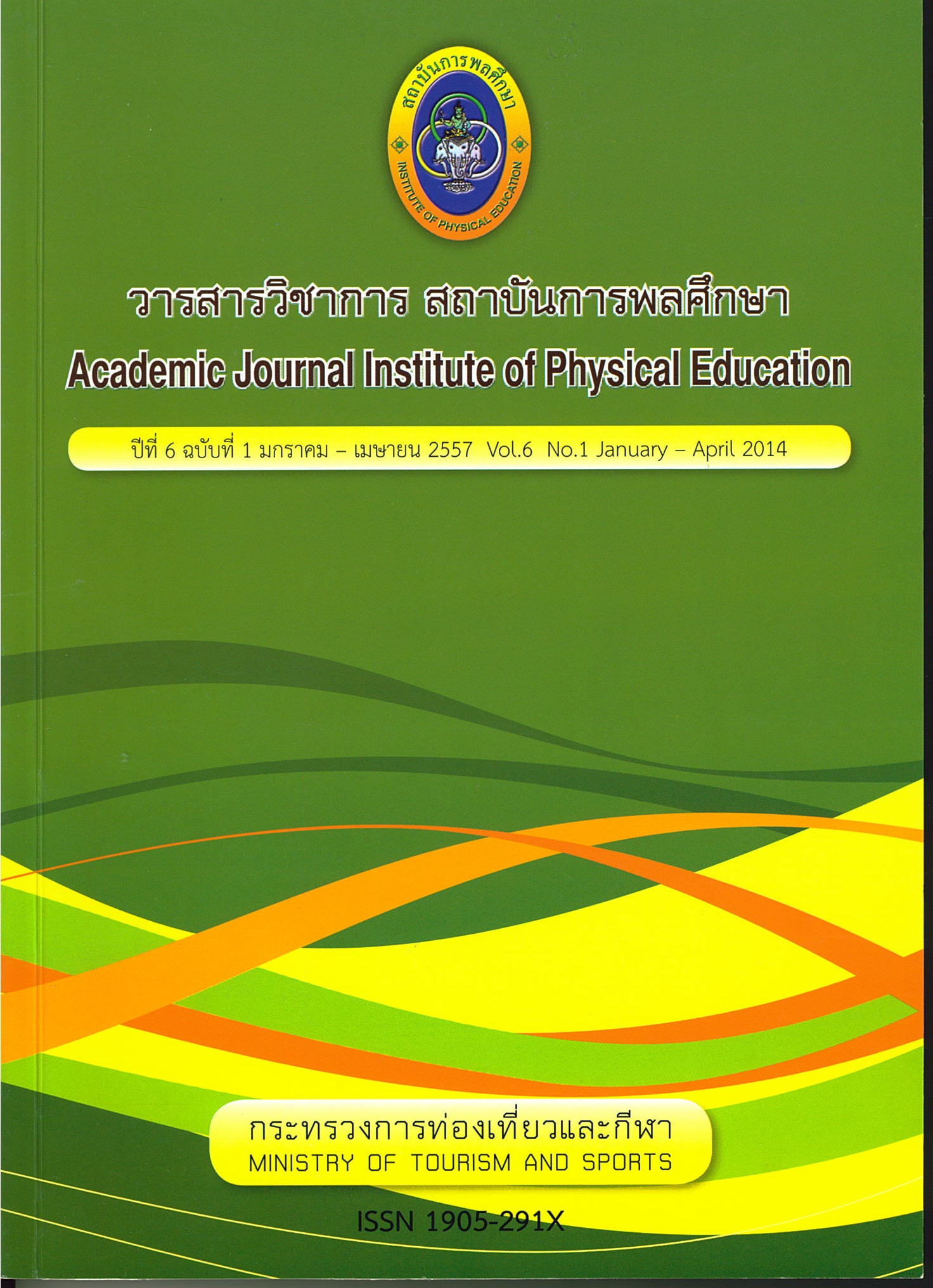The Motivation of International Tourists for Health Tourism in Bangkok Metropolis
Main Article Content
Abstract
The purposes of this research were to study and to compare gender, sex and country of residence in terms of the tourism motivation towards health tourism in Bangkok Metropolis and its perimeters in Physical Motivation, Cultural Motivation, Interpersonal Motivation, as well as Status and Prestige Motivation. The samples were 400 international health tourists responded to a survey tool. Data were analyzed statistically in term of frequency, percentage, mean, standard deviation, t-test and oneway analysis of variance, and if differences were found, the differences in pair were later analyzed by LSD method.
The results were as follows:
- This research found out the most tourists using service were male (50.25%), aged between 20-35 years old (46.50%), most were Asian tourists (40.25%), having marital status of being married (52.25%), education level Bachelor's degree (49.25%) and occupations were employees (49.75%).
- Most tourists have never traveled to Thailand (46.25%); Bangkok was the convalescence place after service which tourists wanted most (67%). Their main purposes of visiting were to relax or for leisure (61.75%). Most tourists used the service of Thai Massage (51.25%). Expense for health tourism was about less than 50,000 Baht (48%) and the period of staying in Thailand was about 1-3 weeks (45%).
- The health tourism motivation was at high level of two aspects nan Physical Motivation (
= 3.59) and Cultural Motivation (
= 3.48). In addition, the health tourism motivation in Bangkok Metropolis was at medium level of two aspects namely Interpersonal Motivation (
= 3.12) and Status and Prestige Motivation (
= 3.25)
Article Details

This work is licensed under a Creative Commons Attribution-NonCommercial-NoDerivatives 4.0 International License.
The published article is a copyright of the Academic Journal of Thailand National Sports University. The passage appeared in each article in this academic journal is a perspective of each author which is not related to the journal. Each author is required to be responsible for all components of his/her own article. If there are any mistakes, each author must be responsible for those mistakes on his/her own.
References
กระทรวงการท่องเที่ยวและกีฬา. (2554). ฐานข้อมูลการท่องเที่ยวเชิงการตลาด. [ออนไลน์]. แหล่งที่มา : http://marketingdb.tat.or.th/marketingdatabase/index.php [2555, กรกฎาคม 7]
การท่องเที่ยวแห่งประเทศไทย. (2555), การท่องเที่ยวเชิงการแพทย์และสุขภาพ. [ออนไลน์]. แหล่งที่มา :
http://thai.tourismthailand.org [2555, กรกฎาคม 7]
ฉลองศรี พิมลสมพงษ์. (2550). การวางแผนและพัฒนาการตลาดการท่องเที่ยว, พิมพ์ครั้งที่ 6. กรุงเทพฯ : มหาวิทยาลัยเกษตรศาสตร์
ระบบข้อมูลภูมิสารสนเทศเพื่อการลงทุนทางด้านการท่องเที่ยว. (2555). รายงานสรุปการท่องเที่ยวเชิงสุขภาพ. [ออนไลน์]. แหล่งที่มา : http://www.tourisminvest.tat.or.th/index.php?lang=th [2555, กรกฎาคม 7]
ศิริรัตน์ อ่อนดี. (2555), การท่องเที่ยวเชิงสุขภาพ [ออนไลน์]. แหล่งที่มา : http://region4.prd.go.th/ewt news.php?nid=25659 [2556, มกราคม 10]
ศูนย์การวิจัยกสิกรไทย. (2550). โรงพยาบาลเอกชนไทย : ขยายฐานสู่ภูมิภาค..เพิ่มศักยภาพการแข่งขัน [ออนไลน์]. แหล่งที่มา : http://www.kasikornresearch.com/th/K-EconAnalysis/Pages/ViewSummary.aspx?docid=9997 [2555, กุมภาพันธ์ 17]
ศูนย์ข่าวการศึกษาไทย. (2555) การท่องเที่ยวเชิงสุขภาพอาเซียนปี 55. [ออนไลน์]. แหล่งที่มา : http://enn.co.th/5626 [2555, กุมภาพันธ์ 17]
Goeldner, C.R. and Ritchie, J. R. B. (2006). Tourism: principles, practices, philosophies. NJ: John Wiley and Sons.
Yamane, T. (1967). Statistics: An introductory analysis. New York: Harper and Row.


